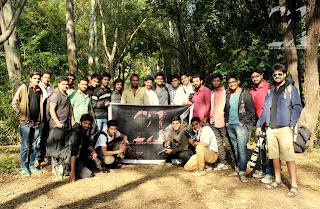The Godmakers of Kumartuli
Godmakers may sound over-exaggerated here but trust me,they literally make gods and pour in life into the ‘hay & clay’ .The word Kumartuli basically originates from the word Kumar/kumbhar (people who make clay idols) and Toli means group. Now every Indian can guess the meaning. Geographically, kumartuli is stitched to the river banks of Hugli river at ward no 9 of Kolkata near sovabazar (You will start pronouncing the ‘bha’ as ‘va’) That happens when you are in Kolkata for a considerable amout of time.
Historically, Kumartuli, one of Kolkata's oldest neighbourhoods, provides the city its greatest source of joy — idols of Durga. There are dedicated and prolonged efforts that transforms from a crude structure of clay-and-hay to a beautiful, bedecked Bengali bride and reaches the countless pandals of Kolkata. Kumartuli came into existence when British East India company decided to build there colonies at Fort William in 17th century. The workers(based on there skillsets) were distributed into locations and the Kumars/Potters then dwelled at Kumartuli. The potters, along with the pots, started creating the clay images which were worshipped across the mansions,cities and across the country eventually.
Lets ride to the present tense now,There are different stages to the whole process of making Idols. On Akshaya Tritiya, clay for the sculptures is collected from the banks of Ganges. A handful of soil (punya mati) is collected from the nishiddho pallis of Calcutta, and added to the clay mixture which goes into the making of the Durga sculpture.
The above four lines are literally insufficient to describe the idol making process.It is way beyond this. All I can say is that the kumars pour in there lives into the idols by working day in day out to finish the job before it reaches the date of deployment. Yes,they too have deadlines and clients!
As you enter the ‘bazaars of the gods’, you as a photographer need to pay some fees to have a hassle-free ride and then you are officially eligible to capture the photographs or watch them work. May be that’s how the demand & supply concept works.Fair enough from our end. Because what you witness inside is priceless. You may still be the victim of some criticism from the workers if you are being a distraction for them but there concentration is appreciable. Around 500 workshops supply the idols to 90+ countries worldwide. Distractions, therefore, are not welcome. The hay is covered up with the clay followed by multiple layers of ‘x’ materials and glue to keep the idols intact, said one of the worker. The hay drastically reduces the weight of the idol and makes the portability easy.
Once you visit this place,you can witness a lot many things other than idol making.You will come across the lifestyle of these creators.These are the families where the generations are into pottery business,They are simple people clad in soiled lungi but trust me,there are magicians! These iconic idols will be proudly standing in the huge pandals across the world with lakhs of praying handsn
The city of Kolkata has a rich historic background being the capital of india pre independence and these compartmentalized historic locations in and around the old city are the results of the British East India company and the marwaris in 17th century.
Written By -
Aditya Kulkarni
Member , 21st The Club Of Photographers
Photography work by Aditya kulkarni
©21st The Club Of Photographers




































